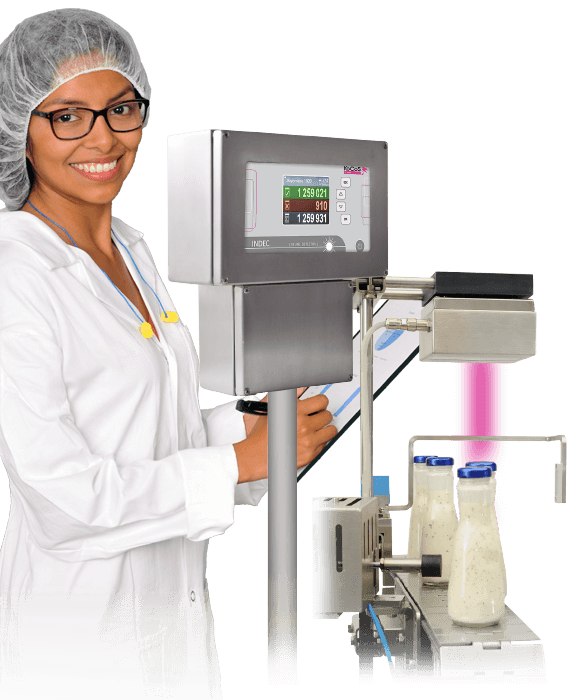
 INDEC vacuum test systems monitor a wide range of containers during the production process, including bottles, jars and cans, by measuring the cap panel concavity of their closures which is dependent on the vacuum inside. This non-contact inspection reliably identifies defective containers for automatic rejection.
INDEC vacuum test systems monitor a wide range of containers during the production process, including bottles, jars and cans, by measuring the cap panel concavity of their closures which is dependent on the vacuum inside. This non-contact inspection reliably identifies defective containers for automatic rejection.

Operation and integration
Ensuring that products meet the highest quality standards is absolutely essential in the manufacture of food products in particular.
... here we go
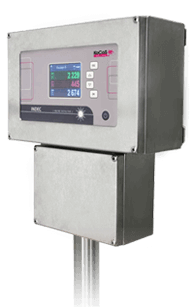
Vacuum inspection with INDEC
The non-contact, 100% in-line vacuum inspection of jars, bottles, cans and similar containers is carried out within the production process. Containers which show insufficient vacuum, cocked/tilted caps or missing caps are reliably identified and automatically rejected.
... here we go

Non-contact, reliable closure inspection!
100% Made in Germany!
Throughputs up to
1,200 units/ minute.
Detection limit for the vacuum starting from 50 µm lid deformation or 150 mbar differential pressure.
Simple self-learning procedure -
No technician required!
Usage for all lid diameters
from 30...110 mm.
Modular system, enabling the further use of ejectors and others.
INDEC tolerates vibrations and water drops on the lids.
KoCoS devices convince through performance and reliability!
Quick format changeover in less than 3 min.

Operation and integration
Ensuring that products meet the highest quality standards is absolutely essential in the manufacture of food products in particular.
Leak-tight product containers have a major role to play here. Leakages allow the contents of a container to get out, but more importantly they also allow germs to get in, rendering the contents unusable.
INDEC vacuum test systems monitor containers for leak tightness fully automatically within the production process. A wide range of containers, including bottles, jars and cans are tested for leak tightness by means of a non-contact inspection.
The means to this end is a pre-existing vacuum or a vacuum created in the container expressly for the purpose of leakage testing. Containers which are not leak-tight are reliably identified and automatically rejected.
These processor-controlled test systems are highly reliable and extremely easy to use, qualities which have played no small part in making them the first choice already for many companies throughout the world.
The non-contact, 100% in-line vacuum inspection of jars, bottles, cans and similar containers is carried out within the production process. Containers which show insufficient vacuum, cocked/tilted caps or missing caps are reliably identified and automatically rejected.
A sensor measures the cap panel deflection which is dependent on the vacuum inside the container. The measurement values are evaluated by the testing software, leak tightness is assessed by comparing the data of each container with the data of a golden sample. The desired values are determined automatically by means of a simple, easy-to-use teach-in function. All container parameters are saved format-specifically and settings are made at the touch of a button.
The systems are operated using a touch screen in combination with a membrane keypad. All system messages and information about the current test procedure are displayed clearly on the colour graphics display. All housings and plug connectors can withstand high-pressure/steam cleaning in compliance with IP69K.
Multi-functional and versatile
Equipped with an optical sensor, INDEC can be used for closures made of any material, including composite or plastic lids and twist-off lug closures made of metal. All common closures can be measured with one and the same sensor head.
Large working distance for reliable operation
The large measuring distance of over 100 mm rules out collisions between the sensor head and containers. Variations in the dimensions of the containers, misalignment of containers and vibrations of the conveyor are fully tolerated.
No problems with moisture
Unlike other optical measuring methods, the optical INDEC sensor head is unaffected by the presence of moisture or fully formed water droplets. Furthermore, all housings are made of stainless steel and comply with IP69K in accordance with the principles of hygienic design. This ensures that there can be no ingress of moisture even when pressure washers are used.
Fast and easy format changeover
Not only does the optical sensor reach high test speeds, it also has the major advantage of providing easy handling, especially for frequent format changeovers. The system can be set up at just a touch of a button using saved parameters sets.
Automatic parameterization with teach-in function
To be able to react quickly to process events, it must be possible to change parameters easily and reliably. The optical sensor head features a user-friendly, time-saving teach-in function. The operator is guided step-by-step through the interactive teach-in process with graphical support. The container-specific test parameters and operating data are generated automatically. The operator prompting is so easy to follow that even inexperienced users can use the teach-in function.
The basic version of the INDEC vacuum testing system consists of the following components:
Inside the sensor head are the infrared transmitter diode and the double row of receiver diodes. The stainless steel housing of the sensor head has an opening window of (13 x 5) cm at the bottom. This allows a small track misalignment of the containers in routine operation. All common closures are measured with one and the same sensor head. It is not necessary to exchange the sensor head depending on the measuring task.
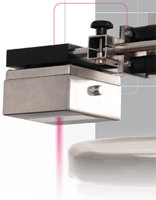
In the central unit, the data acquired by the vacuum sensor and the light barrier unit is processed by the vacuum testing software and the control signals are calculated for the ejector. A touch screen with a colour graphics display, multilingual user interface and membrane keypad is provided for data entry and display. The recipe parameters for the containers to be tested are generated and saved via program routines (teach-in).
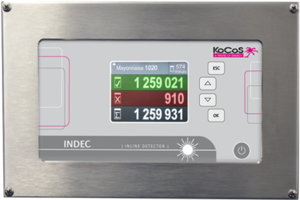
The stainless steel housing of the connection unit is fixed directly to the central unit. The supply voltage and all signal leads are assigned in the connection unit. All installations by users are also carried out via the connection unit.
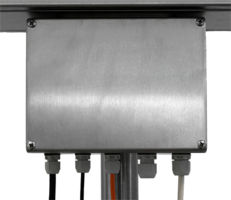
The reflective light barrier complete with reflector and adjustable holding fixtures is used for product detection to start the measurement.
High immunity to optical interference from the environment is a distinguishing feature of the light barrier as well as its rugged metal housing which is detergent and disinfectant-proof and able to withstand high-pressure cleaning. The light barrier features highly visible status LEDs. Precise switching and high detection quality guarantee reliable object detection.
The light barrier is equipped with an adjustable fixture for mounting on the sensor and light barrier holding bracket. The holding fixtures for the light barrier and reflector are made of rust-resistant stainless steel and can be adjusted in a vertical and horizontal direction.
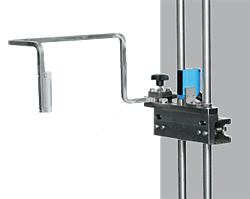
The holding bracket with fixtures for the vacuum sensor and light barrier unit can be adjusted in a vertical and horizontal direction in accordance with the height and position of the container. Integrated scales make it possible to reproduce the settings at any time. The values of the settings can be managed in the testing software and can be shown on the graphics display.
The holding bracket is made of rust-resistant stainless steel and is mounted on a base plate which can be screwed directly to the conveyor system.
The INDEC closure control can be extended by these additional components at any time if required:
With the ejector unit, containers which have been identified as defective by a test system are removed from the production flow.
Control and adjustment in line with the container parameters are performed with the central unit. The ejector unit consists of a pneumatic valve and cylinder, a compressed air service unit with manual shut-off valve, a pressure regulator with filter and an adjustable holding fixture.
To make it easy to fix the ejector unit to the conveyor system, the entire unit is mounted on a base plate which can be screwed directly to the conveyor system. The pneumatic valve and cylinder are protected by a housing made of rust-resistant stainless steel.
The ejector monitoring function is used to ensure that the ejector has separated a pack that has been detected as bad from the product flow. For this purpose, another light barrier is arranged parallel to the conveyor belt opposite the ejector. If the light barrier is not interrupted by the defective pack within the adjustable delay after the ejector has been triggered, an error message is generated.
The large stainless steel tray is used to collect rejected containers. The rugged construction with crimped edges is made entirely of rust-resistant stainless steel.
The tray is provided with four drill holes and is fixed directly to the conveyor system opposite the ejector unit.
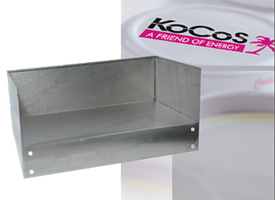
The device option for system synchronisation contains a software extension and a rotary encoder which is ready for connection. With this option, INDEC systems can be synchronised with the speed of the conveyor system to accommodate variable conveyor speeds.
Real-time evaluation of the rotary encoder pulses by the INDEC central unit enables the position of the container to be determined exactly and the ejector to be controlled precisely.
The hygienic rotary encoder is detergent and disinfectant-proof and IP69K protection makes it able to withstand high-pressure/steam cleaning. It is connected to the connection unit by means of a 5 m long connection cable and can rotate in a clockwise or anti-clockwise direction.
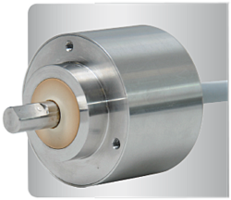
The robust, stable stand for the central unit and connection unit consists of a tripod base with levelling feet and a stand tube.
The central unit and the connection unit are mounted using clamps which provide height adjustability.
The levelling mechanism of the tripod base provides stability on uneven surfaces.
The base and stand tube are made of rust-resistant stainless steel. The base plates of the levelling feet are made of anti-bacterial plastic and can be fixed securely to the floor by means of three drill holes.
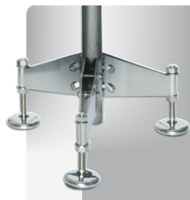
INDEC delivers solutions for the vacuum inspection of jars, bottles, cans and similar containers. Non-contact, 100% in-line vacuum inspection is carried out within the production process. An optical sensor measures the cap panel deflection which is dependent on the vacuum inside the container.
Thanks to their modular design, INDEC VD devices can be extended as and when needed. It is easy to add to their functionality in response to changing requirements.
Due to the documents supplied and the clear menu navigation in the sensor parameterization, the end customer can set up and commission INDEC products himself, as has often been done in the past, without the need for support by a KoCoS technician.
KoCoS Downloads
Here you can find detailed information on our devices and applications, as well as brochures, application reports, technical details, technical papers and much more.
Enjoy browsing and reading!
Downloads

INDEC Blog Posts
Blog posts with interesting and practical background information about INDEC Vacuum Inspection.
Here you will also find answers to practical questions about specific topics about the measuring and inspection technology and its applications.
Just have a look and find out more!
... here we go

Contact
Whatever your request, we‘re here for you.
Just enter contact details and the subject of your request and we will be happy to get back to you personally.
Or e-mail to: info(at)kocos.com
Contact ![]()
Let‘s stay in touch!
Subscribe to the KoCoS newsletter and be the first to know about our products, updates and other news.
Subscribe ![]()
Whatever your request, we‘re here for you.
Whatever your request, we are here for you! Just enter contact details and the subject of your request and we will be happy to get back to you personally.
Or e-mail to: info(at)kocos.com
Contact ![]()
Let‘s stay in touch!
Subscribe to the KoCoS newsletter and be the first to know about our products, updates and other news.
Subscribe ![]()